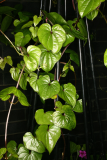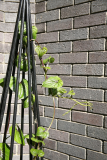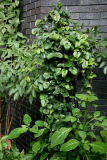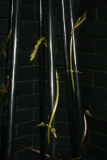Additional notes (click to expand)
Commemorative
It was named for Pedanius Dioscorides (Diuscurides) of Anazarbus (AD 40–90), a Greek physician and herbalist who practised in Rome. He was born in Anazarbus, in the Roman province of Cicilia, during the reign of Tiberius or Caligula, and was a contemporary of Pliny the Younger (AD 61–112).
He studied pharmacology in Tarsus under the teacher Arius/Areios, to whom he dedicates his book, De materia medica. He lived ‘a soldier’s life’ – viz an itinerant one – travelling through the Greek-speaking part of the Roman Empire, Sicily, southern Italy and possibly into Gaul. His book remained the main source of herbal medicinal information for the next 1,600 years. It was
translated into Latin and Arabic, being copied by hand for 1,400 years. It had no illustrations and it is diffi cult to be certain what plants he was writing about. In 491 the Vienna Dioscorides, also known as the Anicia Juliana codex, was produced, a manuscript with paintings of what contemporary writers believed were the plants of Dioscorides.
Oakeley, Dr. Henry. (2012). Doctors in the Medicinal Garden. Plants named after physicians. Royal College of Physicians.
link
Medicinal
Prescription only medicine: steroids, oestrogens etc.
There is a video by Dr Henry Oakeley
Videos from the garden
link
Nomenclature
A synonym of Dioscorea polystachya
Plants of the World online, Kew Science http://plantsoftheworldonline.org/taxon/urn:lsid:ipni.org:names:318443-1
link
Other use
In 1988 Benjamin Johnson was stripped of his 100metre Gold Medal for use of the anabolic steroid stanazolol which can be made from yams.
DeSwiet, Michael. (2012). Plants and the Olympic Games.
link
Geographical distribution
- Asia-Temperate, China
- Asia-Temperate, Eastern Asia, Japan
- Asia-Temperate, Eastern Asia, Korea
- Asia-Temperate, Eastern Asia, Taiwan
Podcast
Dioscorea batatas Decne.
Family: DIOSCOREACEAEGenus: Dioscorea
Species: batatas Decne.
Common names: Chinese yam; Chinese potato
Distribution summary: China, East Asia
Habit: Perennial
Hardiness: H4 - Hardy; average winter
Habitat: Rocky slopes
Garden status: Not currently grown
Flowering months: September, October
Reason for growing: Commemorative, medicinal, prescription only medicine
.JPG)




.JPG)
.JPG)